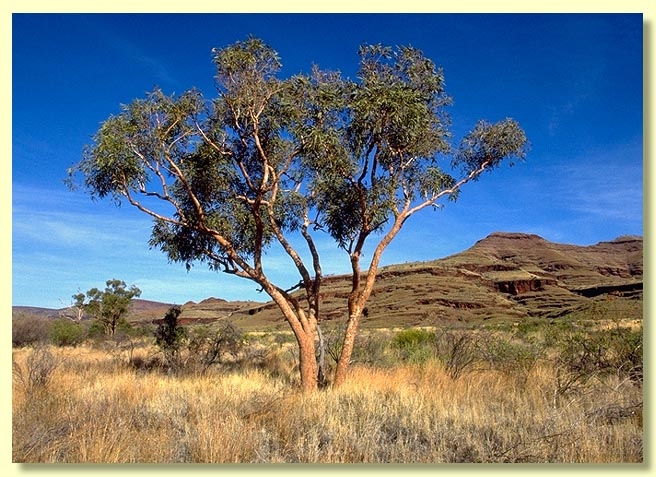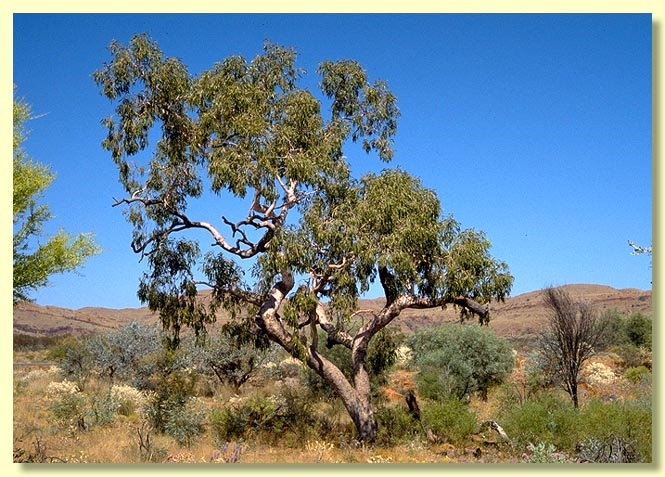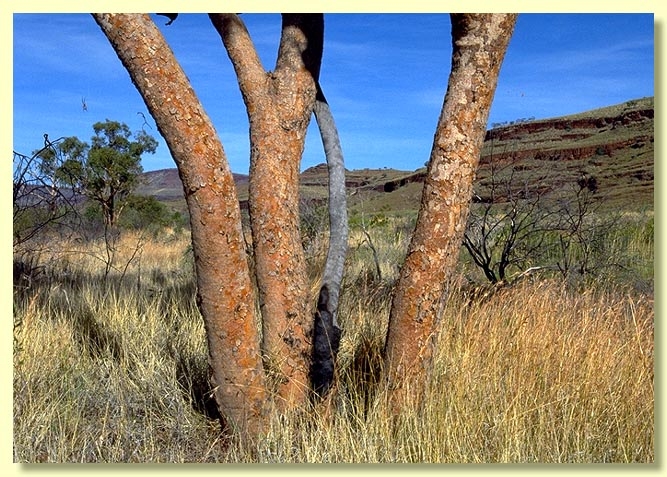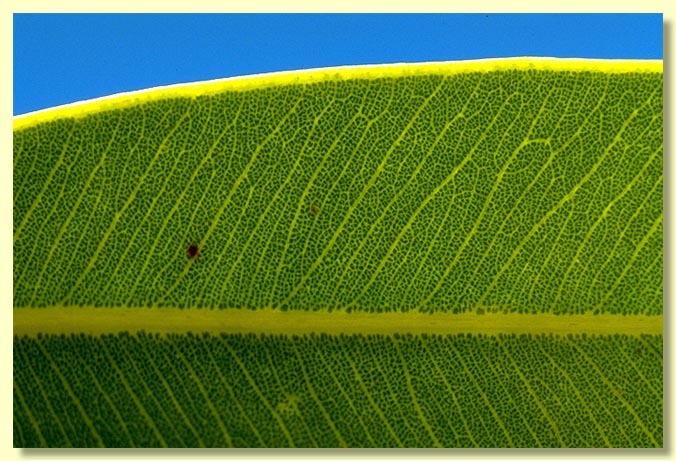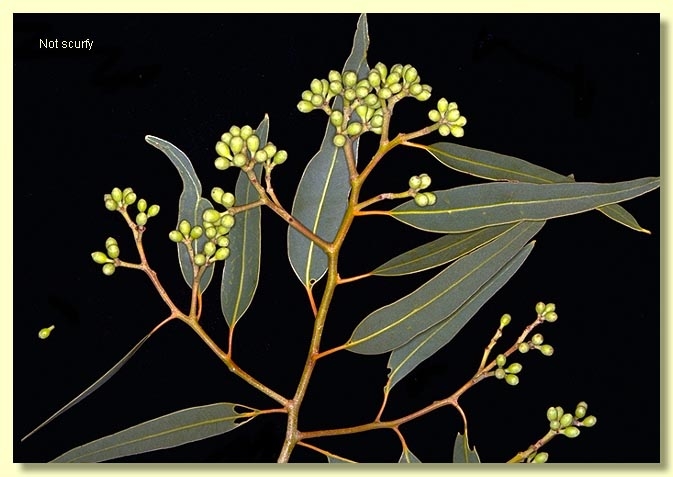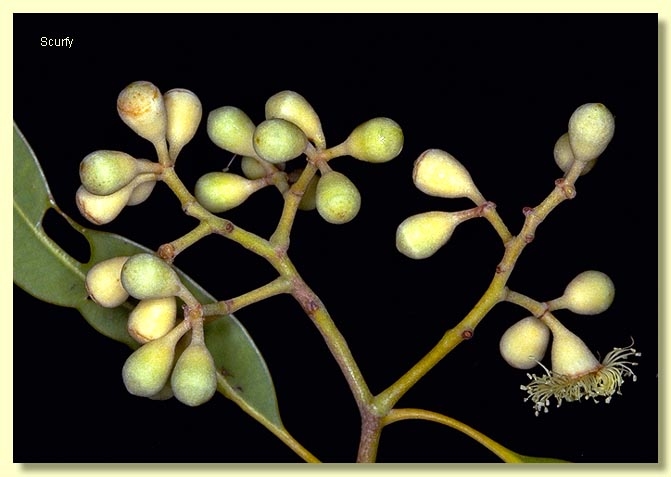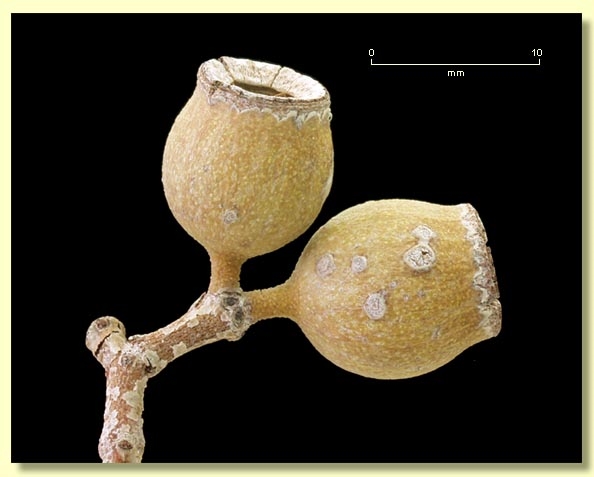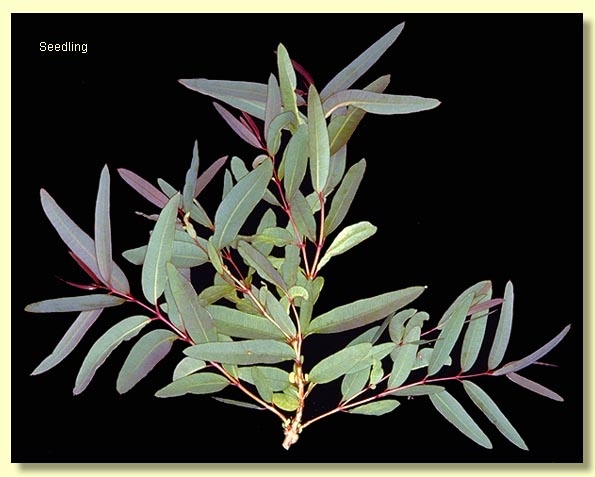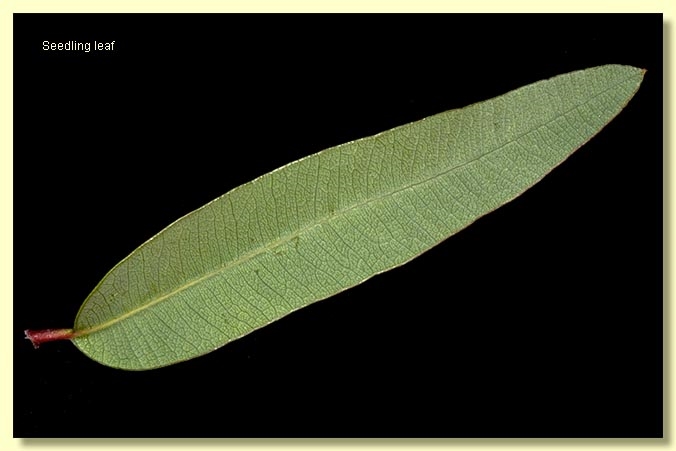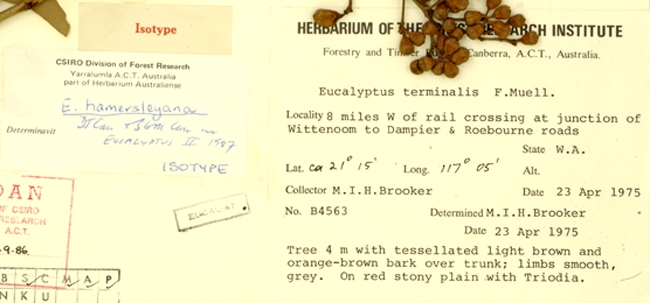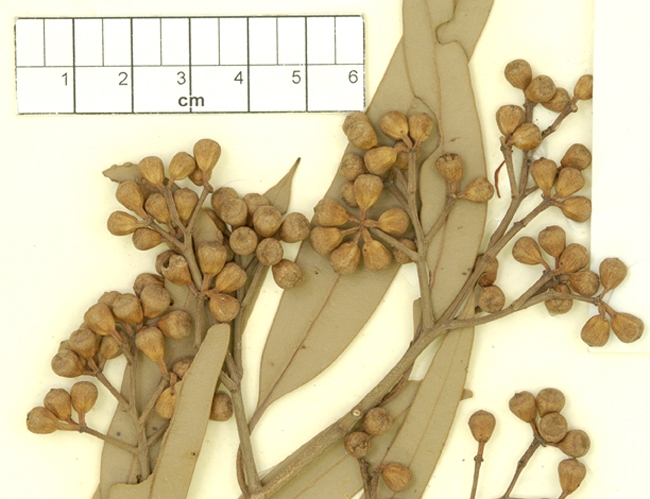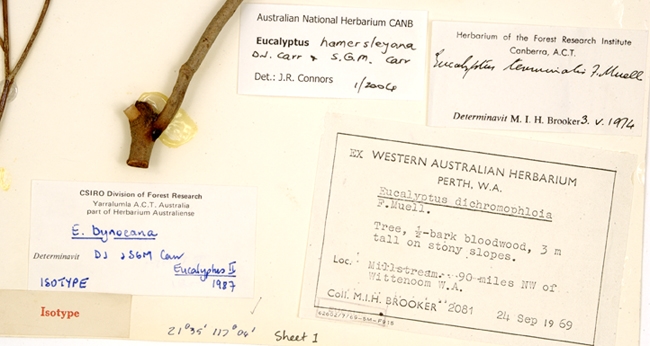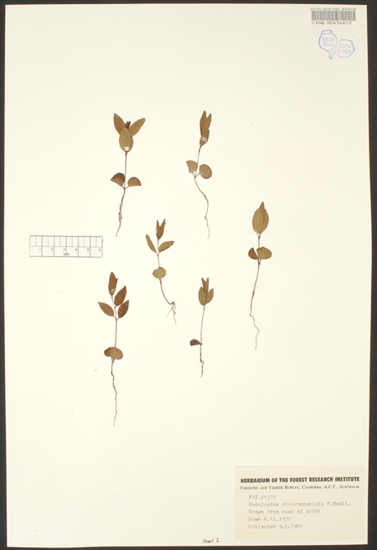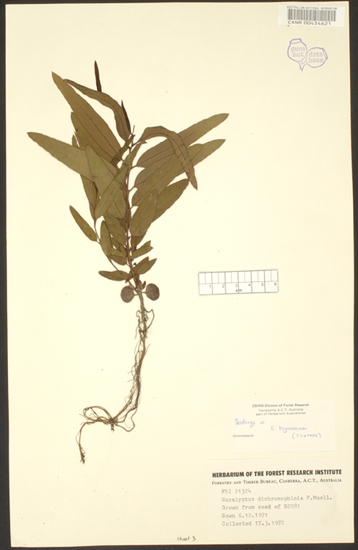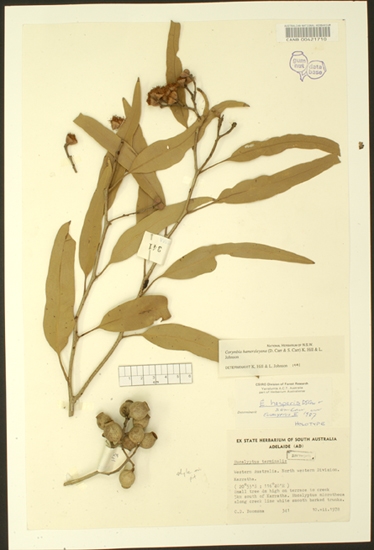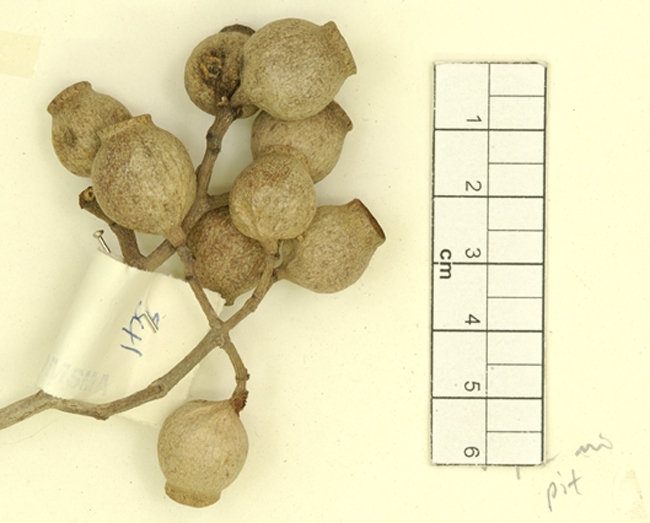Corymbia | Rufaria
Euclid - Online edition
Corymbia hamersleyana
Corymbia hamersleyana K.D.Hill & L.A.S.Johnson, Telopea 6: 314 (1995).
Tree or sometimes a mallee to 8 m tall. Forming a lignotuber.
Bark rough, light grey-brown to reddish brown, thin, flaky to tessellated over part or all of the trunk, branches usually smooth, cream to pale orange or pale brown, rarely rough.
Branchlets lack oil glands in the pith.
Juvenile growth (coppice or field seedlings to 50 cm): stems rounded in cross-section; juvenile leaves stiff, thickish, shortly petiolate, opposite, elliptical to ovate or lanceolate, 4.5–10.5 cm long, 1.2–3 cm wide, pale green to yellowish green.
Adult leaves alternate, petioles 1–2.5 cm long; blade lanceolate, 8–16.5 cm long, 1–2(3) cm wide, base tapering to petiole, margin entire, apex pointed, concolorous, dull or glossy, light green to mid-green, penniveined, reticulation very dense, intramarginal vein apparently absent, oil glands apparently absent.
Inflorescence terminal compound, peduncles rounded to angular, (0.3)0.6–1.3 cm long, buds 7 or 9 per umbel, pedicels 0.2–0.8 cm long. Mature buds obovoid to pyriform, 0.6–0.8 cm long, 0.5–0.8 cm wide, scurfy to scarcely scurfy or not scurfy, scar absent (both opercula shed together at flowering), operculum rounded and often apiculate, stamens inflexed, all fertile, anthers versatile, dorsifixed, oblong, dehiscing by longitudinal slits, style long and straight, stigma blunt with a short fringe of papillae, locules 4 or 5, the placentae each with 5 vertical ovule rows or the rows irregular. Flowers creamy white.
Fruit pedicellate (pedicels 0.1–0.6 cm long), urceolate, 1.1–1.7(2) cm long, 0.9–1.6 cm wide, smooth, disc descending vertically, valves 4 or 5, enclosed.
Seeds brown, 7–10 mm long, ellipsoidal with terminal wing, hilum ± ventral.
Cultivated seedlings (measured at ca node 10): cotyledons large, reniform; stems rounded in cross-section, sparsely setose only on lowest part; leaves shortly petiolate, opposite for at least 12 nodes, sometimes becoming sub-opposite then reverting to opposite, lanceolate to elliptic, 5.5–10 cm long, 0.8–2.5 cm wide, base tapering, dull, mid-green, sparsely setose with bristle-glands on lower leaves only, upper leaves smooth.
Flowering has been recorded in April, May, June, July, August and September.
Small tree endemic to the Pilbara region of Western Australia, where it is widespread and common on rocky sites, stony rises, mountain tops and shallow red sands over bedrock at lower elevations nearer the coast, from Nullagine and Newman to Karratha and North West Cape but absent from more extensive desert plains to the north of the Hamersley Range. Corymbia hamersleyana is recognizable by its tessellated bark, concolorous adult leaves, small slightly scurfy buds and small urn-shaped fruit.
Within the general area where C. hamersleyana occurs there is only one other bloodwood species, C. terminalis, which is confined to plain areas to the north and east of the Pilbara Region on deeper sandy loam or clay-loam desert soils. C. terminalis (in the broad sense used in
Despite this similarity between these two taxa Hill & Johnson (1995) described another new species from areas of desert plains within the general Pilbara area, C. semiclara. They stated that it differed from both C. hamersleyana and C. opaca by differences in scurfiness of buds, having shorter pedicels than either of the other two species, and having leaves somewhat more glossy. The first and third of these differences are very subjective and difficult (? impossible) to assess meaningfully, and the pedicels seem to overlap in dimensions with those of C. hamersleyana. Thus the authors of
The authors collected a specimen (Slee & Connors 4492) of bloodwood tree which seems indistinguishable from C. hamersleyana and which grows on red soil desert plain from the area of Western Australia between Cosmo Newberry and Warburton, ca 700 km from the Pilbara Region. Whether this specimen represents an isolated population of C. hamersleyana, or is simply C. terminalis, the usual desert bloodwood found on plains in this area, is impossible to say given the lack of strong diagnostic features separating them. The other two bloodwood species found in this general area, C. chippendalei and C. lenziana, both have smooth (not scurfy) buds, and fruit that does not develop a neck.
MORE ABOUT CORYMBIA
MORE ABOUT RED BLOODWOODS
Corymbia hamersleyana: referring to the area of occurrence, Hamersley Ranges.

